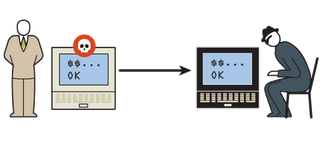Jaw-dropping
The cases presented below are a couple of example of classical cyber-attacks that are conniving, stealthy, and almost ingenious.
- Case 1: While surfing the web at home, the user of a hacked PC was prompted to create new accounts in order to use her own Wireless Access Points (WAP). Not knowing what was happening behind the scenes, the victim would use a common username or email address along with a password that was used for several other online accounts. The result: the hackers gained complete and unblocked access to her email, Facebook, Twitter, Pinterest, or even online banking site.
- Case 2: On the premises of a Starbucks coffee shop, hackers positioned a Wi-Fi hotspot and disguise it so that it appears to belong to Starbucks. Attackers then redirect victims to frequently used websites that were actually modified or fake to capture login credentials or deploy keylogging malware to harvest personal identity information.

 To infiltrate your bank account hackers need exactly the same set of complete credentials you would supply to your online banking site. It is extremely rare, although not impossible, that a hacker would directly contact someone who would then voluntarily give away her bank account number, login name, and password over the phone or email. But it is very common that a compromised PC infested with malware can provide hackers with the necessary recorded keystrokes, mouse clicks, and even screenshots. By mimicking the procedures they’ve learned with the obtained credentials, hackers can digitally impersonate you and thus gain access to your bank accounts over the Internet with ease.
To infiltrate your bank account hackers need exactly the same set of complete credentials you would supply to your online banking site. It is extremely rare, although not impossible, that a hacker would directly contact someone who would then voluntarily give away her bank account number, login name, and password over the phone or email. But it is very common that a compromised PC infested with malware can provide hackers with the necessary recorded keystrokes, mouse clicks, and even screenshots. By mimicking the procedures they’ve learned with the obtained credentials, hackers can digitally impersonate you and thus gain access to your bank accounts over the Internet with ease.